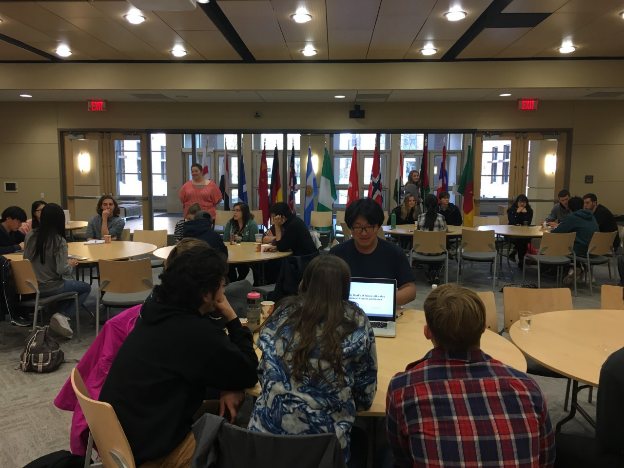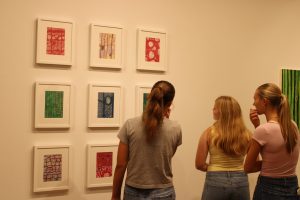Cultural Coffe Hour: Traditional Dresses and Fashion
April 14, 2017
At this week’s Cultural Coffee Hour, students from all across the world gathered together to discuss the history of fashion and traditional dress in their home countries. The students who presented were from a number of places, China, India, Korea, and Japan.
The first presenter went over the history of the Saree, a traditional Indian dress worn by women during formal events. The Saree is difficult to properly put on, as it has a very specific pattern that was come up with thousands of years ago. Another traditional Indian garment is the Salwar Kameez, which is for both men and women but the styles differ by gender. Along with these garments, there is often a lot of jewelry worn with these types of clothing, especially during formal events.
The next presenter discussed the history of Chinese dresses and wedding dresses. UW-L junior Mengzhen Cai talked about the colors of these dresses, stating, “The dress colors are all associated with the different earth elements, with black appearing in all representing the earth.” Cai elaborates, “Each of the different dynasties had a new way of clothing, with the most popular now being the Cheongsam dress, the one you see in a lot of movies and television.”
The Cheongsam became popular in the republic era of China. It’s made of silk and shapes to the woman’s body figure to show her curvatures. Cai expands, “In my hometown for weddings they wear the western dress like in United States, but at night for reception, they change into the Cheongsam to express their native culture.”
The next presenter talked about the various forms of the Hanfu, a Ming dynasty silk robe with long arms reaching the ground. Yuanhao Liu, UW-L sophomore stated, “The Hanfu is one of the biggest of the 56 nationalities in China, and a lot of Asian dress is based on the Hanfu, including the Japanese Kimono and Korean Hanbok.” Liu expands, “The Hanfu is typically one piece for male and two piece for female with a blouse. The Japanese Kimono has 12 pieces or more that are put together in specific way.”
There was a lot to be learned about traditional fashion and dress at this week’s cultural coffee hour. The last Cultural Coffee Hour for the semester will be held at 5 PM in the Hall of Nations on April 25th. The topic is folk tales and all are welcome.






